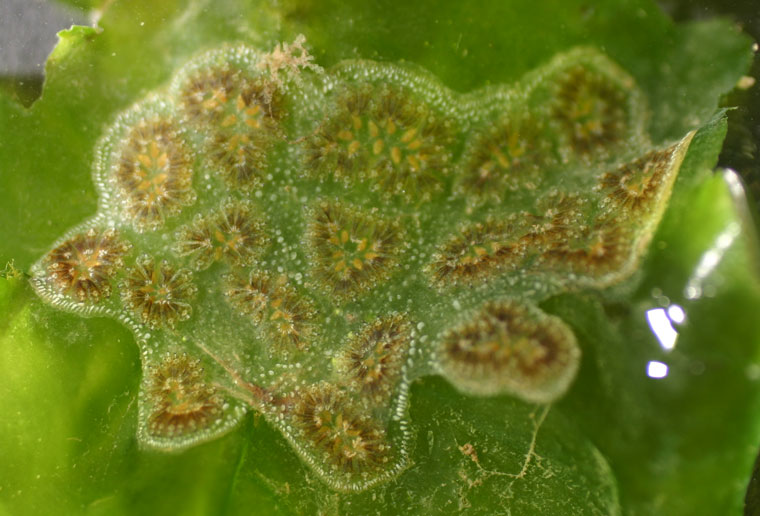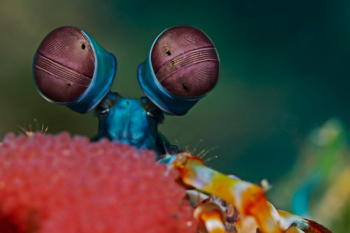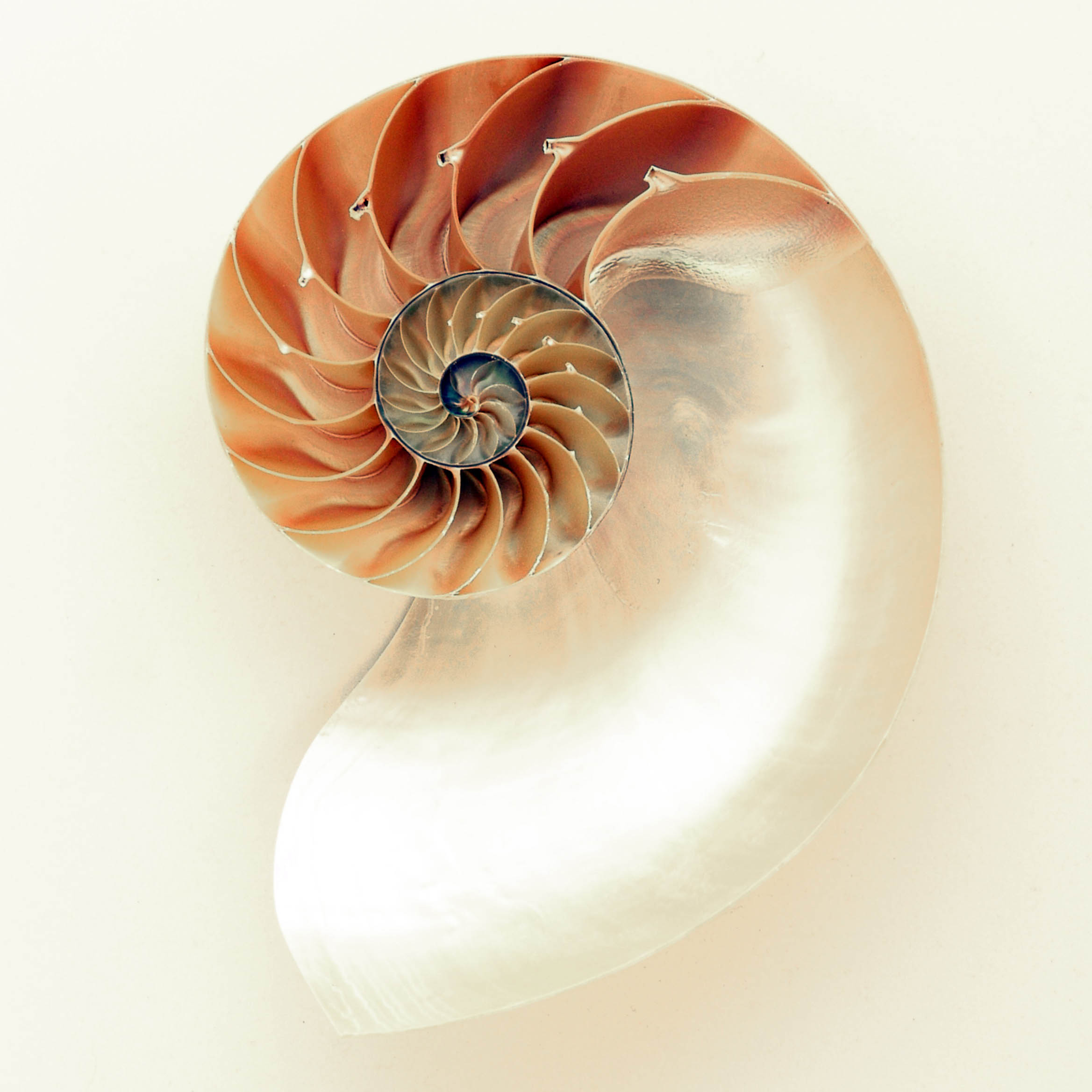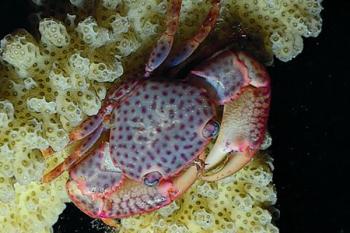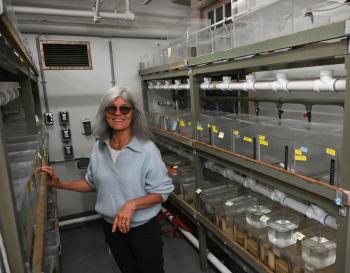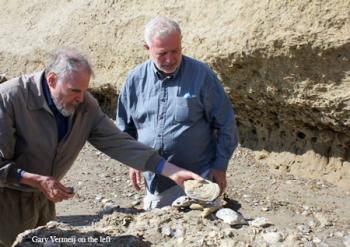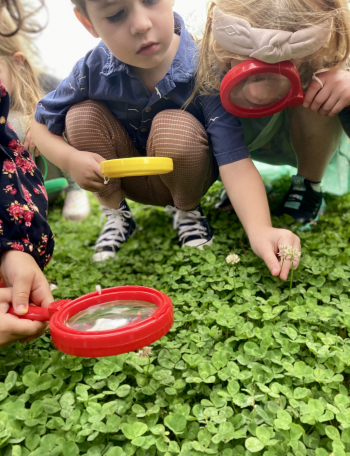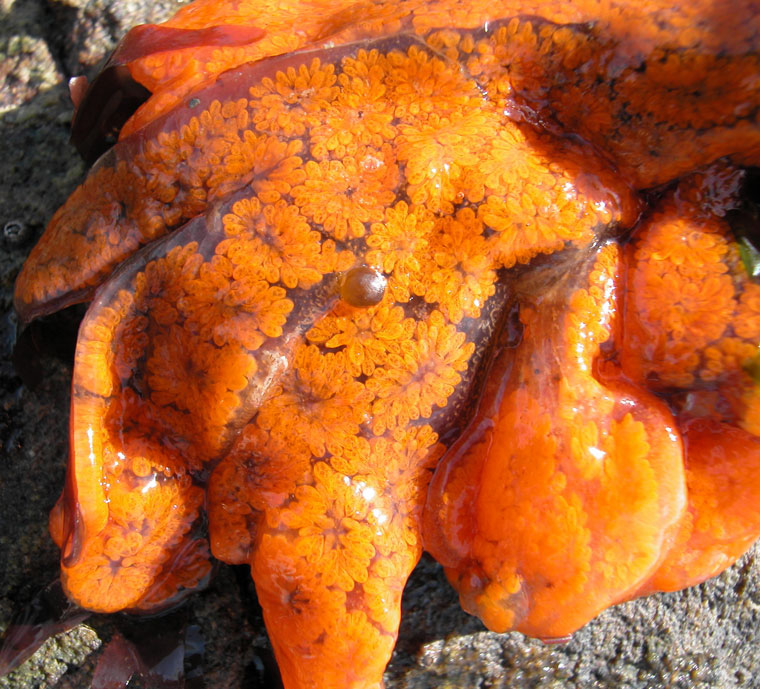
"Each member of the colony is an individual animal, but the colony is another individual animal, not at all like the sum of its individuals. Here are two animals, yet the same thing. Which is the animal, the colony or the individual?” The Log from the Sea of Cortez, John Steinbeck and Ed Ricketts
Botryllus are shallow, colonial tunicates. This species is cosmopolitan, found everywhere as an invasive species. These tunicates are Chordates, as are humans. After sexual reproduction the fertilized eggs grow into tadpole larvae. The larvae have all four characteristic features that put tunicates in the Chordate phylum: a notochord, which is like a soft spinal cord; a post-anal tail; a dorsal nerve cord; and pharyngeal slits. (see Blog) Once the larvae anchor to a substrate, they become adults and begin to bud-off a new colony through asexual reproduction.
Botryllus is more closely related to vertebrates than any other tunicate: it has genes that are significantly similar to 75% of the human genome. To have an animal with so much homology with the human genome and one that replicates itself quickly makes it an ideal model organism for research. Scientists use the tunicate colonies for research on stem cells, immunology and neurodegeneration.
Stem Cells
As a fixed, non-moving adult, Botryllus clones itself into a colony. The colony only lives a week before aging and reabsorbing itself as its stem cells bud-off to create an entire new colony. Its stem cells are able to differentiate into the heart, brain, gonads, etc. These are the only cells in Botryllus that survive the animal’s entire life but they do eventually age. Because of this life cycle where the animal actively ages and regenerates, Botryllus is a model organism for studying aging, stem cells and regeneration in vertebrates including humans.
Immunology
This species is also good for studying the immune system response during transplantation surgeries in humans. When an organ, like a kidney, is transplanted the immune system of the person receiving the transplant can reject or accept the new organ. In humans, T-cells mediate this process.
In the wild when two Botryllus colonies meet each other, they also can either accept or reject each other. In humans the immune response to “other” is both cellular and genetic, as well as mediated by specialized T-cells. Botryllus has an immune response but has no T-cells, so the process is mediated only by genes and cells. By studying the process in Botryllus, we can understand the genetic and cellular component of the immune process in humans.
Neurodegeneration
Scientists have found parallels between the degeneration of neurons in Botryllus and the human brain. Similar genes are active when nerve cells degenerate in Botryllus and when humans have neurodegenerative diseases like Alzheimer’s disease or Parkinson’s disease. A lot can be learned about diseases by studying Botryllus. And researchers at Stanford say, “…genetic changes that build up over decades in the Botryllus colonies affect neurodegeneration in many of the same ways as age-related genetic changes affect neurodegeneration in older people.”
